A Comprehensive Guide to the Transformative Power of Botox Cosmetic
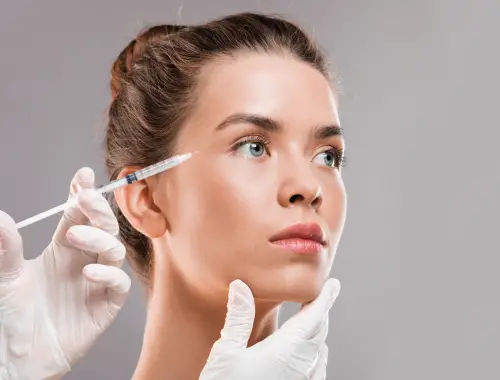
In a world where the pursuit of eternal youth and beauty is a common aspiration, Botox Cosmetic has emerged as a remarkable solution. From Hollywood celebrities to everyday individuals, the allure of Botox lies in its ability to smooth wrinkles, erase fine lines, and rejuvenate one’s appearance without the need for invasive surgery. This article explores the fascinating journey of individuals before and after Botox, shedding light on the transformative power of this popular cosmetic procedure.
The Basics of Botox
Before delving into the remarkable transformations that Botox can achieve, it’s essential to understand what Botox is and how it works. Botox, short for Botulinum toxin, is a neurotoxin produced by the bacterium Clostridium botulinum. While the word “toxin” may sound intimidating, Botox has been safely and effectively used in the field of cosmetic medicine for years.
Botox works by temporarily blocking nerve signals to specific muscles, ultimately relaxing them. This muscle relaxation results in the smoothing of wrinkles and fine lines in the treated area. The effects are not permanent, typically lasting three to six months, which is why Botox is often referred to as a “lunchtime procedure” due to its quick application and minimal downtime.
Before Botox: The Concerns
Many individuals who seek Botox treatments do so because they are bothered by the signs of aging that have gradually appeared on their faces. These signs may include:
- Dynamic Wrinkles: Wrinkles that appear when making facial expressions, such as crow’s feet (wrinkles around the eyes) and forehead lines.
- Frown Lines: The vertical lines that form between the eyebrows, often referred to as “11 lines” or “angry lines.”
- Fine Lines: Tiny lines that develop due to the natural aging process, sun exposure, and other environmental factors.
- Facial Asymmetry: Some individuals may have facial asymmetry or uneven muscle activity, which can be addressed with Botox to create a more balanced appearance.
- Preventative Measures: Some younger individuals choose Botox as a preventive measure to delay the onset of fine lines and wrinkles.
After Botox: The Transformations
Botox treatments have the power to deliver remarkable transformations, both subtle and dramatic, depending on the individual’s goals and the areas treated. Here are some common areas of transformation and the results that can be achieved:
- Smoothed Forehead: After Botox, a furrowed or lined forehead can become remarkably smooth, giving a more youthful and relaxed appearance.
- Vanishing Crow’s Feet: Those pesky crow’s feet that appear when smiling or squinting can be significantly reduced, allowing the eyes to look more open and refreshed.
- Relaxed “11 Lines”: Botox can soften the deep vertical lines between the eyebrows, creating a less stern or “angry” expression.
- Lifted Eyebrows: By targeting specific muscles around the eyebrows, Botox can create a subtle lifting effect, making the eyes appear more open and alert.
- Reduced Fine Lines: Fine lines around the mouth and other areas of the face can be diminished, providing a smoother overall complexion.
- Improved Facial Symmetry: Botox can be used strategically to address facial asymmetry, helping to achieve a more balanced and harmonious look.
The Botox Procedure
The Botox procedure is a relatively simple and quick process. Here’s what you can expect before, during, and after your Botox treatment:
Before the Procedure:
- Consultation: You’ll typically begin with a consultation with a qualified and experienced healthcare provider or licensed injector. During this consultation, your goals and concerns will be discussed, and a personalized treatment plan will be created.
- Preparation: On the day of the procedure, your injector will cleanse the treatment area and may apply a topical numbing cream to minimize discomfort.
During the Procedure:
- Injection: Using a fine needle, Botox is injected into the targeted muscles. The number of injections and the amount of Botox used will vary based on the treatment plan.
- Duration: The entire procedure usually takes 15 to 30 minutes, making it a convenient option for individuals with busy schedules.
After the Procedure:
- Recovery: There is little to no downtime after a Botox treatment. You can resume your regular activities immediately, although it’s advisable to avoid strenuous exercise for a day or two.
- Results: The effects of Botox gradually become visible over a few days to a week. You’ll notice smoother skin and reduced wrinkles in the treated areas.
Let’s explore some popular procedures often combined with Botox treatments to achieve comprehensive facial rejuvenation:
1. Dermal Fillers
What Are Dermal Fillers? Dermal fillers are injectable substances that add volume and fullness to areas of the face that have lost their youthful plumpness. Unlike Botox, which relaxes muscles to reduce wrinkles, fillers work by filling in lines and hollow areas, providing a smoother and more youthful appearance.
Common Uses:
- Lip Enhancement: Dermal fillers can add volume to thin lips, creating a fuller and more defined lip contour.
- Cheek Augmentation: By adding volume to the cheeks, dermal fillers can restore youthful cheek contours and reduce sagging.
- Nasolabial Folds: Fillers can soften the deep lines that run from the sides of the nose to the corners of the mouth.
- Marionette Lines: These lines extend from the corners of the mouth to the chin and can be smoothed with fillers.
- Under-Eye Hollows: Dermal fillers can minimize the appearance of under-eye bags and hollows.
Before and After: Combining Botox with dermal fillers can result in a comprehensive transformation. Botox addresses dynamic wrinkles, while dermal fillers restore volume to areas affected by static wrinkles and sagging. The result is a more youthful and refreshed appearance.
2. Chemical Peels
What Is a Chemical Peel? A chemical peel is a skin-resurfacing procedure that uses a chemical solution to exfoliate the top layer of skin. It stimulates collagen production and can improve skin texture, tone, and pigmentation irregularities.
Common Uses:
- Fine Lines and Wrinkles: Chemical peels can reduce the appearance of fine lines and wrinkles, especially when combined with Botox.
- Acne Scars: Peels can diminish the appearance of acne scars by promoting skin regeneration.
- Sun Damage: They can improve sun-damaged skin, reducing dark spots and uneven pigmentation.
- Skin Texture: Chemical peels can leave the skin smoother and more radiant.
Before and After: Combining Botox with chemical peels can yield impressive results. Botox smooths out dynamic wrinkles, while chemical peels address textural issues and skin tone, resulting in a vibrant and youthful complexion.
3. Microdermabrasion
What Is Microdermabrasion? Microdermabrasion is a non-invasive procedure that uses a machine to exfoliate the top layer of skin, removing dead skin cells and stimulating collagen production. It is milder than chemical peels and can provide a gentle skin rejuvenation.
Common Uses:
- Fine Lines and Wrinkles: Microdermabrasion can reduce the appearance of fine lines and superficial wrinkles.
- Skin Texture: It can improve skin texture, making it smoother and more even.
- Hyperpigmentation: Microdermabrasion can lighten dark spots and reduce the appearance of sun damage.
- Mild Acne Scars: It may help with superficial acne scars.
Before and After: When combined with Botox, microdermabrasion can offer a holistic approach to facial rejuvenation. Botox targets dynamic wrinkles, while microdermabrasion improves overall skin texture and appearance.
4. Laser Skin Resurfacing
What Is Laser Skin Resurfacing? Laser skin resurfacing uses focused laser energy to remove the top layer of skin, stimulate collagen production, and address various skin concerns. There are different types of laser treatments available, each targeting specific issues.
Common Uses:
- Wrinkles and Fine Lines: Laser resurfacing can smooth out wrinkles and fine lines.
- Scars: It can reduce the appearance of acne scars and surgical scars.
- Sun Damage: Laser treatments can improve sun-damaged skin and pigmentation irregularities.
- Skin Tightening: Some lasers can tighten loose skin, providing a more youthful appearance.
Before and After: When combined with Botox, laser skin resurfacing can provide a powerful one-two punch against signs of aging. Botox addresses muscle-related wrinkles, while laser treatments enhance overall skin quality, resulting in a comprehensive facial rejuvenation.
5. Thread Lifts
What Is a Thread Lift? A thread lift is a minimally invasive procedure that uses dissolvable threads to lift and tighten sagging skin. It’s an option for those seeking a non-surgical facelift or neck lift.
Common Uses:
- Sagging Jowls: Thread lifts can lift and tighten sagging jowls, providing a more defined jawline.
- Cheek Lift: They can elevate and contour the cheeks for a more youthful appearance.
- Neck Lift: Thread lifts can improve the appearance of a sagging neck.
Before and After: Combining Botox with a thread lift can offer a synergistic approach to facial rejuvenation. Botox addresses dynamic wrinkles, while a thread lift provides a lifting and tightening effect, resulting in a more youthful and rejuvenated appearance.
Before and after Botox, individuals have a range of cosmetic procedures at their disposal to achieve their desired look. Combining Botox with popular procedures like dermal fillers, chemical peels, microdermabrasion, laser skin resurfacing, and thread lifts can result in a comprehensive facial transformation. It’s important to consult with a qualified and experienced healthcare provider to create a personalized treatment plan that aligns with your goals and ensures a safe and effective outcome. Whether you seek a subtle enhancement or a dramatic change, the world of cosmetic procedures offers diverse options for facial rejuvenation.
Safety and Considerations
While Botox is generally considered safe when administered by trained professionals, there are essential considerations to keep in mind:
- Qualified Providers: Ensure that you receive Botox treatments from a licensed and experienced healthcare provider or injector who is well-versed in the procedure.
- Realistic Expectations: Botox can deliver impressive results, but it’s essential to have realistic expectations. It may not completely erase deep wrinkles, but it can significantly improve their appearance.
- Temporary Effects: The effects of Botox are temporary and typically last three to six months. Maintenance treatments are necessary to sustain the results.
- Possible Side Effects: While uncommon, Botox can have side effects such as mild bruising, swelling, or temporary drooping of the eyelid. These effects are usually temporary and resolve on their own.
- Allergic Reactions: Although extremely rare, some individuals may have an allergic reaction to Botox. Be sure to discuss any allergies or medical conditions with your provider before treatment.
Conclusion
Botox has become a transformative tool in the world of cosmetic medicine, offering individuals the opportunity to rejuvenate their appearance and boost their confidence. Whether it’s erasing fine lines, smoothing wrinkles, or addressing facial asymmetry, the before and after effects of Botox are nothing short of impressive.
It’s essential to approach Botox treatments with careful consideration, realistic expectations, and the guidance of qualified professionals. When done correctly, Botox can provide not only physical transformations but also a renewed sense of self-esteem and confidence.
As you embark on your own journey before and after Botox, remember that beauty is a personal journey, and the decision to undergo cosmetic procedures should always align with your unique goals and values. With the right provider and a well-thought-out treatment plan, you can confidently embrace the transformative power of Botox.
Frequently Asked Questions (FAQ) About Botox and Facial Rejuvenation
If you’re considering Botox and other facial rejuvenation procedures, you likely have questions. Below, we’ve compiled some frequently asked questions to provide you with informative answers.
1. What is Botox, and how does it work?
Botox, short for Botulinum toxin, is a neurotoxin that temporarily blocks nerve signals to specific facial muscles. This muscle relaxation reduces the appearance of wrinkles and fine lines by preventing muscle contractions in the treated area.
2. Is Botox safe?
Yes, Botox is generally considered safe when administered by qualified medical professionals. It has been used for cosmetic and medical purposes for many years with a well-established safety record.
3. What can Botox treat?
Botox is commonly used to treat dynamic wrinkles, such as crow’s feet, forehead lines, and frown lines. It can also be used for other purposes, including addressing excessive sweating (hyperhidrosis) and muscle-related medical conditions.
4. How long do Botox results last?
The effects of Botox typically last three to six months, but individual results may vary. Regular maintenance treatments are necessary to sustain the desired results.
5. Are Botox injections painful?
Most people report only minimal discomfort during Botox injections. Providers often use a fine needle, and some may apply a topical numbing cream to the treatment area to enhance comfort.
6. What is the recovery time after Botox?
There is little to no downtime after a Botox treatment. You can resume your regular activities immediately. However, it’s advisable to avoid strenuous exercise for a day or two.
7. What are dermal fillers, and how are they different from Botox?
Dermal fillers are injectable substances used to add volume and fullness to areas of the face that have lost their youthful plumpness. Unlike Botox, which relaxes muscles, fillers work by filling in lines and hollow areas, providing a smoother appearance.
8. Can I combine Botox with dermal fillers?
Yes, it’s common to combine Botox with dermal fillers for a comprehensive facial rejuvenation approach. Botox addresses muscle-related wrinkles, while dermal fillers restore volume to areas affected by static wrinkles and sagging.
9. What is a chemical peel, and how does it complement Botox treatments?
A chemical peel is a skin-resurfacing procedure that exfoliates the top layer of skin, improving texture, tone, and pigmentation. Chemical peels can complement Botox treatments by addressing skin quality and tone while Botox focuses on wrinkles.
10. Is Botox suitable for everyone?
Botox is generally safe for most adults, but it may not be suitable for pregnant or breastfeeding individuals or those with specific medical conditions. Consult with a qualified healthcare provider to determine if Botox is right for you.
11. Can Botox be used for preventative purposes?
Some younger individuals choose Botox as a preventive measure to delay the onset of fine lines and wrinkles. Preventative Botox can help maintain a youthful appearance as signs of aging begin to appear.
12. What is the cost of Botox treatments?
The cost of Botox treatments varies based on factors like geographic location, the number of treatment areas, and the provider’s experience. On average, the cost can range from a few hundred to a few thousand dollars.
13. Are there any side effects of Botox?
While uncommon, Botox can have side effects such as mild bruising, swelling, or temporary drooping of the eyelid. These effects are usually temporary and resolve on their own.
14. How do I choose a qualified Botox provider?
Choose a licensed and experienced healthcare provider or injector who specializes in cosmetic procedures. Ask for recommendations, check reviews, and inquire about their training and credentials.
15. What results can I expect from combining Botox with other procedures?
Combining Botox with procedures like dermal fillers, chemical peels, or laser treatments can result in a comprehensive facial rejuvenation. Botox addresses dynamic wrinkles, while complementary procedures improve skin quality, texture, and overall appearance.
16. Is the transformation after Botox and other procedures permanent?
The results of Botox and most facial rejuvenation procedures are not permanent and typically last a few months to a few years. Regular maintenance treatments are necessary to sustain the desired outcomes.
Before undergoing any cosmetic procedure, it’s essential to consult with a qualified healthcare provider or specialist who can assess your individual needs, answer your specific questions, and create a personalized treatment plan tailored to your goals.

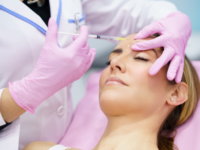
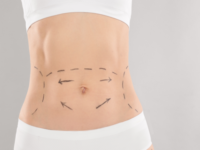
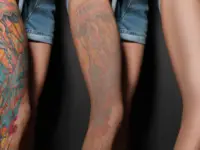
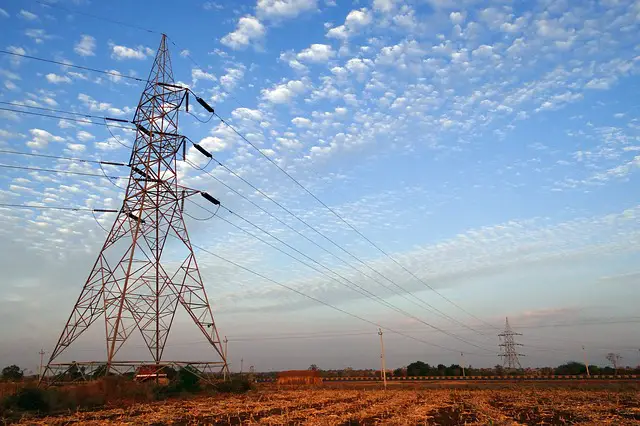








Leave a Reply